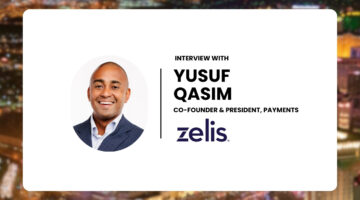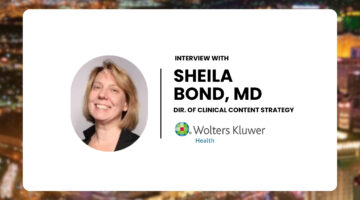
It goes without saying that artificial intelligence (AI) continues to dominate many of the conversations around health care technology. Hospitals continue to face some of their toughest challenges ever, navigating everything from workforce shortages and clinician and staff burnout to some of the tightest operating budgets ever. The potential of leveraging AI technology to address these challenges is promising.
And as these conversations continue to evolve, according to NVIDIA’s 2025 State of AI in Healthcare report, large language models (LLM) are now among the top three AI workloads in healthcare, with 53% of organizations actively using them. Clinical decision support is one of the fastest-growing use cases, and 83% of healthcare leaders believe AI will revolutionize care delivery within the next five years.
This article outlines one of the lesser-discussed ways AI can be leveraged to address challenges clinicians are facing related to fragmented data and limited visibility into rapidly changing patient conditions, especially in environments like the intensive care unit (ICU). This is particularly troublesome for the most fragile and vulnerable patients as gaps in physiological data can hinder timely, life-saving interventions. It has been a long-standing problem that is being addressed in a new way today – thanks to the ability to harness the power of AI and LLMs to generate meaningful clinical insights from fragmented data.

How Zelis is Transforming Healthcare Payments with Enterprise AI
How Zelis hopes to solve the healthcare financial system for payers and providers.
A complicated ecosystem
Stepping into the ICU means being bombarded by constant alarms and beeping from every direction demanding immediate attention. There are monitors, medical devices, wires and tubes everywhere. The patients here are so critically ill they can’t speak and rely on 24/7 care to vigilantly watch even the slightest changes in their condition that could indicate deterioration. Ask any ICU clinician and they will tell you that it is truly a complex, unique ecosystem of its own and is arguably the most overwhelming, demanding, high-stress job in the hospital even for the most experienced doctors and nurses.
And what’s more, they are still navigating the same obstacles the rest of the hospital is up against – burned out staff, tight resources and more.
Bridging the gaps

Transforming Clinical Content with Ambient & Generative AI
Sheila Bond, MD, talked about the latest trends regarding integration of AI in healthcare.
One specific obstacle, not unique to but can be especially challenging for the ICU, is related to how to deal with fragmented data in areas such as, but not limited to, the electronic health record (EHR). Thankfully, this challenge is well suited for AI and LLMs to address. While the EHR does a great job at tracking basic information like medications, inputs and outputs, and key vital signs, it lacks the ability to provide real-time, actionable insights to help identify patients who have changes in their condition, but also reports on patient risk, dynamically.
Critically ill patients’ conditions can change on a dime and it’s difficult for care teams to keep a close eye on all patients in the ICU and determine what stage of deterioration they may be in. Treatment decisions often need to be made very quickly and the wrong treatment at the wrong time can be fatal.
That’s where AI and LLMs come in, with the ability to provide the full picture of a patient, powering platform solutions that leverage algorithms and aggregated data streams about their specific conditions and then continually learn from other data inputs in order to provide clear, accurate risk assessments. This context and risk assessment for each patient provides guidance to clinicians to deliver the right personalized care at the right time to prevent life-threatening conditions that often occur in the ICU including cardiogenic shock, respiratory failure, acute respiratory distress syndrome and sepsis. On the flip side, this information doesn’t only indicate patient deterioration, it can also provide cues and notifications when a patient is trending in a positive direction. This is extremely helpful because de-escalating care appropriately can lead to getting patients off of certain high-risk medications and decrease the amount of time they need to actually be in an intensive care setting. This is not only good for the patient, it also frees up needed beds and supports cost and resource containment.
Because these platforms provide hospital-wide surveillance of key patient populations, it’s possible for those at risk to be continuously monitored despite where they are located, without requiring a staff member to be physically right at their side. This has a significant positive impact on efficiencies, thus lessening the burden on the ICU staff.
And in addition to these benefits, hospitals are also utilizing the technology to ensure proper adherence to hospital protocols and industry-wide clinical guidelines. Furthermore, the data provided and insights generated help hospitals identify and close care gaps and systemic issues so they can continuously refine protocols and staff training based on real, actionable data. This provides an opportunity to build a true learning health system.
There to support, not to replace
Despite initial widespread reluctance among physicians to utilize AI as part of their workflow their comfort is growing. In February 2025, the American Medical Association (AMA) released new data tracking physician sentiment from 2023 to 2024. The findings showed that attitudes toward healthcare AI are shifting. Their survey found:
- 68% of physicians surveyed in 2024 indicated they see at least some advantage to using AI tools (up slightly from 63% in 2023).
- 36% of physicians reported feeling more excited than concerned about AI (up from 30% in 2023).
- Two thirds of physicians surveyed in 2024 indicated they currently use AI in their practice, up significantly from 38% in 2023.
I like to think about AI in the sense as we are discussing it here, as a virtual assistant. It’s a tool that provides support to care providers that is always working, always helpful and never gets tired. It can seamlessly integrate into already existing workflows and streamline care coordination and communication. Because at the end of the day, this is a tool that provides enhanced situational awareness and gets physicians back to what they do best: Using all relevant knowledge and information, along with their expert clinical knowledge and judgement at the bedside to make the best decision possible for the patient.
Looking towards the future
For those of us who are part of the health care ecosystem, it is our obligation to do our part to find ways to improve patient outcomes and lower health care costs. This often means continuously finding better, more efficient ways to solve problems, utilizing the most optimal tools and data we have at our disposal. And as of right now, and for the foreseeable future, that means finding appropriate use cases to leverage the power of AI and LLMs where it most makes sense.
An increasing number of hospitals worldwide are implementing AI-powered solutions that integrate with their EHR with great success, seeing improved patient outcomes and recovery times, prevention of complications, a reduction in frontline burden in the ICU and cost savings through a reduction in length of stay and readmissions and we can only expect that trend to continue.
Photo: AdrianHillman, Getty Images
Shane Cooke joined Etiometry in 2019 as president and CEO, bringing over 20 years of experience in the medical device and pharmaceutical market spaces in a variety of sales, marketing, strategy and portfolio management roles. Before joining Etiometry, Shane spent more than five years as chief strategy officer of Cheetah Medical, which was acquired by Baxter International in 2019. Prior to Cheetah, Shane spent 11 years with Covidien in the patient care, vascular therapies and corporate sectors, with positions such as: corporate strategy, market and competitive intelligence, leading the market development center of excellence and leading strategy efforts for Japan, Europe, Australia and Canada. Shane holds a BA in psychology from the University of Rochester, as well as an MBA from Suffolk University.
This post appears through the MedCity Influencers program. Anyone can publish their perspective on business and innovation in healthcare on MedCity News through MedCity Influencers. Click here to find out how.







